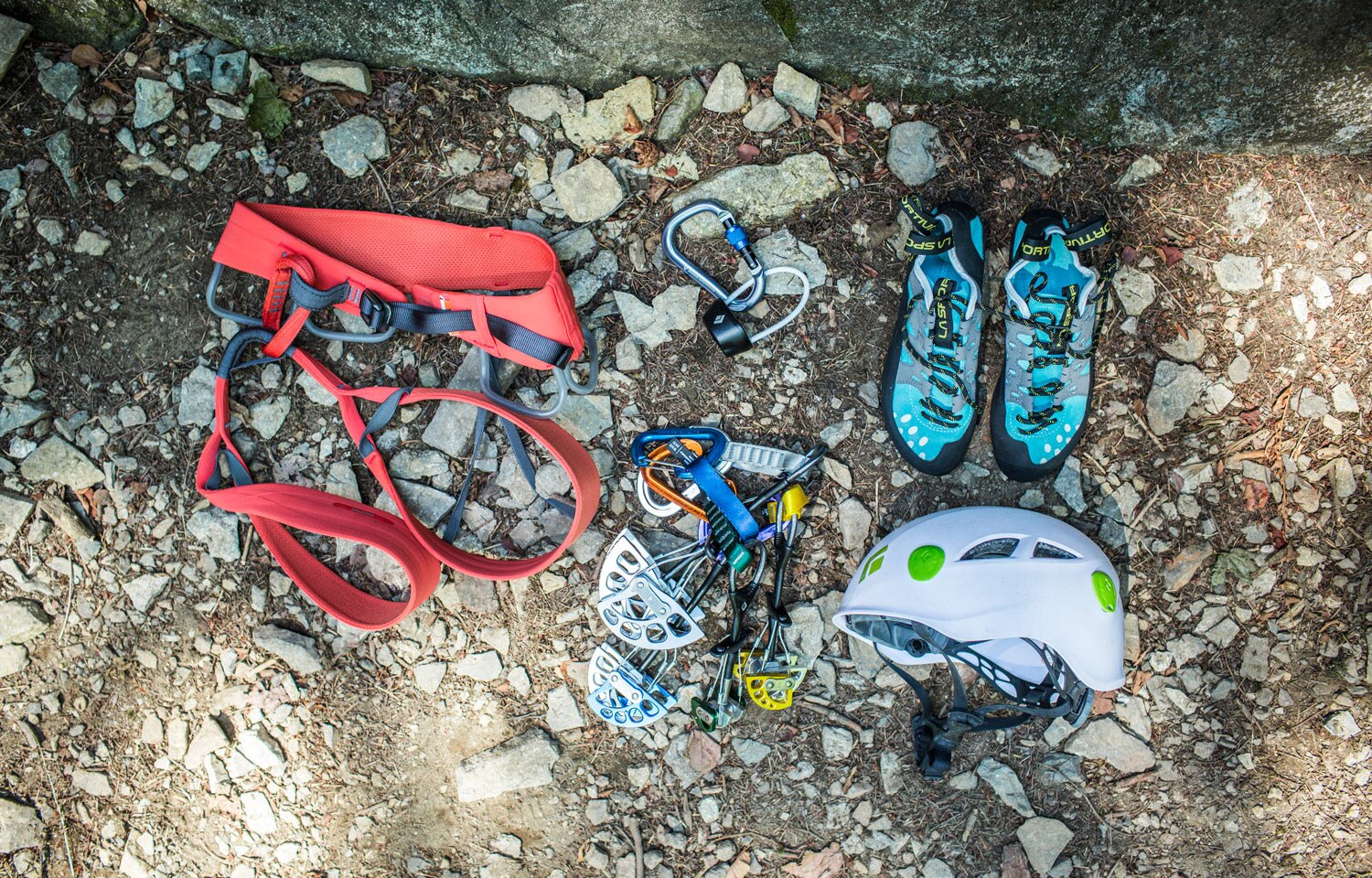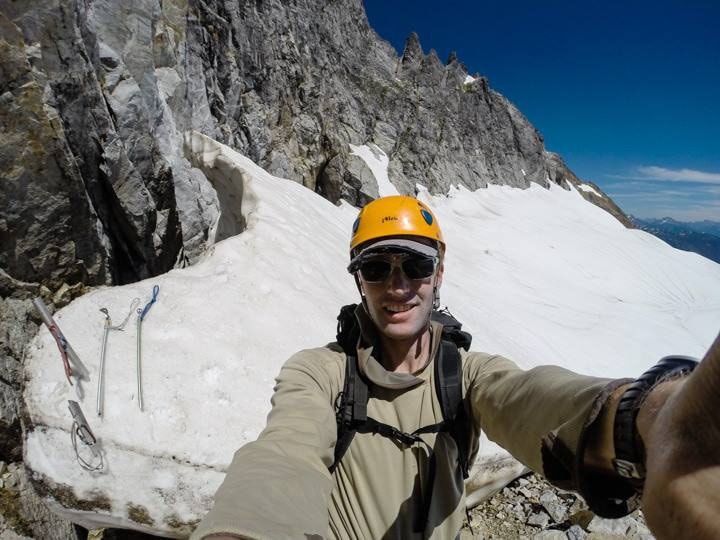All those days at the crag or climbing big peaks together can create a special attachment between you and your climbing gear, making it tough to say goodbye. And then there's the cost of replacing the pricey equipment. Eventually, though, the day will come when you'll need to say goodbye to your trusty gear, and identifying when this should happen will help keep you climbing safely.
Knowing when to retire your climbing gear isn't an exact science. Sometimes you'll be able to recognize obvious damage and know that it's necessary. Other times you won't see anything wrong but it still may be time to set it aside. To figure it all out, it's essential to always inspect your gear closely for damage while also following the manufacturer's guidelines regarding a product's lifespan. And, when in doubt, err on the side of caution and retire it by finding another use for it or throwing it out.
Note: When retiring gear deemed unfit for climbing, you need to ensure you or someone else won't use it again for climbing. It's important to clearly mark gear that's retired or destroy it by cutting it up.
Here's some more detail on when and how to retire ropes, harnesses, carabiners, helmets and slings.
When to Retire a Climbing Rope
Retire a climbing rope immediately if it has been involved in a huge fall with extreme loads or if it shows damage, such as cuts, flat spots, stiffness or lots of fuzziness.
Even a rope that shows no visible signs of damage eventually needs to be retired. Here are some approximate guidelines:
- After a fall with extreme loads or other damage: immediately
- Frequent use (weekly): 1 year or sooner
- Regular use (few times per month): 1-3 years
- Occasional use (once per month): 4-5 years
- Rare use (1-2 times per year): 7 years
- Never used: 10 years
Keep a rope usage log: Recording the purchase date, frequency of use and number and severity of falls in a logbook will help you accurately determine when it is time to retire a rope.
How to check your climbing rope: To know the condition of your rope, it's important to inspect it before every climbing trip. Do so by running every inch of the rope through your hands to look and feel for damage. Do these checks while inspecting your rope:
- Are there extremely fuzzy areas?
- Do you see or feel cuts?
- Do you see or feel flat spots?
- Does the rope feel stiff?
- Can you see the core?
- Do you see discoloration from exposure to sun and/or chemicals?
If the answer is "yes" to any of these, retire the rope, though it may be possible to trim off a damaged area that's near the end of the rope (learn how to repair minor rope damage).
How to retire your rope: When you've decided it is time to retire your rope, see if you can find a creative use rather than tossing it in the trash. Maybe you can turn it into a rug, dog leash or clothesline. Another option is to recycle your rope. Check with the rope manufacturer to see if this is possible.
Learn more about inspecting and caring for a climbing rope.
When to Retire a Climbing Harness
Retire a climbing harness immediately if it shows signs of excessive wear, such as tears, fraying or other damage to the belay loop or the structural webbing of the harness (damage to the nonstructural padding and gear loops are not critical).
Even if your harness has been properly stored and/or used and it shows no visible damage, you should retire it if it is more than seven years old. If you're a climbing professional such as a mountain guide, or you climb full-time, you should retire your harness as early as one year after its first use. Exposure to the sun and other elements can degrade the structural materials in a harness.
How to check your climbing harness: To spot damage on a harness, do these checks before every climbing trip:
- Do you see rips or fraying in the webbing?
- Is there excessive abrasion to the bar-tacks?
- Are any of the buckles damaged?
- Is the webbing discolored?
- If your harness has a wear indicator in the belay loop, can you see it?
If you answered "yes" to any of these, it's time to retire your harness.
What to do with your retired harness: One option is to check with a textile recycler to see if the harness materials can be recycled. Otherwise, toss it in the trash.
Learn more about inspecting and caring for your harness.
When to Retire Carabiners
Retire a carabiner immediately if it is cracked, excessively worn or has a gate that doesn't function properly. A carabiner that has been dropped a significant distance should also be retired (dropped carabiners can suffer damage but still appear intact).
How to check your carabiners: To recognize issues with your carabiners, it's important to do these checks regularly:
- Do you see any cracks, sharp edges or corrosion?
- Is there excessive wear, such as deep grooves caused by the rope? (Anodized color that's been rubbed off is not critical.)
- Are there loose, bent or missing rivets?
- Are there metal burrs?
- Does the gate open and close slowly or not work properly?
- Does the locking mechanism (if there is one) work properly?
If you answered "yes" to any one of the top three questions, you need to retire the carabiner immediately. For the bottom three questions, it may be possible to fix the issue with maintenance (learn tips for maintaining carabiners in our article, Caring for Your Carabiners). However, if the issue stills exists after working on it, retire the carabiner.
How to retire your carabiners: Give your carabiners another life as keychains or keepers for your water bottles. Then, check with your local recycling facility to see if you can recycle them.
When to Retire a Climbing Helmet
Retire a helmet immediately that's dented, cracked or damaged. This includes helmets with damaged straps. Even if you don't see any signs of visible damage, you should retire a helmet after any incident where you think to yourself, "I would have been seriously messed up if I wasn't wearing a helmet." This is especially true for helmets with foam on the inside that's designed to dissipate impact forces via deformation.
Even if it's never impacted, retire a helmet within 10 years. The sun's UV rays slowly degrade materials, so if you climb frequently, cut this lifespan time in half.
How to check your climbing helmet: To stay on top of the condition of your helmet, do these checks before every climbing trip:
- Is there noticeable damage to the outer shell? Minor dings are OK; major dents are not.
- Are there any issues with the buckle or other hardware?
- Is the webbing fraying or torn?
- Is the foam damaged or loose inside the helmet's shell?
If the answer to any of these questions is "yes," then get a new helmet.
How to retire a climbing helmet: Some cities offer helmet recycling, so look into that before tossing it in the trash. Or, come up with a fun use for it (garden planter?).
When to Retire Climbing Slings, Webbing and Cord
Retire slings, webbing or cord immediately if they are ripped, burned, frayed, stiff, discolored or faded, or if they are involved in a severe fall.
Most manufacturers state that, even if never used, slings, webbing and cord should be retired after 10 years. With moderate use and no major accidents, the lifespan may be closer to two to five years. The actual lifespan depends on how frequently you use the slings, webbing and cord and whether or not they incur any damage.
How to check your climbing slings, webbing and cord: Regularly inspect slings, webbing and cord and replace them if you find any of the following:
- Rips or holes
- Burnt, singed or melted areas
- Fraying of the sling, webbing or cord itself or any stitching
- Significant fading due to exposure to sunlight
- Discoloration from contact with damaging fluids
How to retire climbing slings, webbing and cord: Before tossing them in the trash, see if you can find another use. Can you make a belt or use a sling as a handle for something? You can also check with textile recyclers to see if slings, webbing and cord are accepted.

